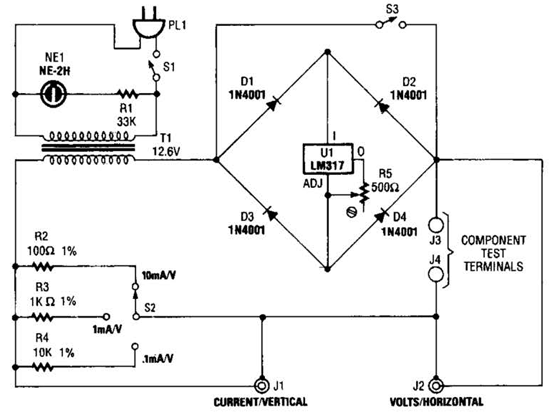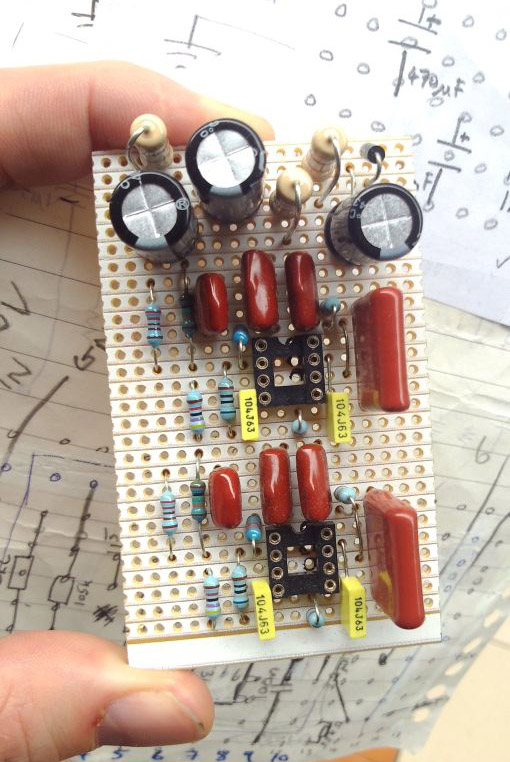Pyro Electric Fire Alarm
Here is an ultra-sensitive fire sensor that exploits the direct piezoelectric property of an ordinary piezo element to detect fire. The lead zircon ate titan ate crystals in the piezo element have the property to deform and generate an electric gate protected p-channel MOSFETs in the inputs. It has high speed of performance and low input current requirements.There are two inputs—the non-inverting input (pin 3) connected to the piezo element through diode D7 (OA71) that carries the voltage signal from the piezo element and the inverting input (pin 2) that gets a preset voltage momentarily changes the voltage level at pin 3 of IC1 and its output swings high.
Transistor T1 conducts taking the reset pin 12 of IC2 to ground. IC2 is now enabled and starts oscillating. With the shown values of the oscillating components C3 (0.22μ) and R6 potential when heated, thus converting the piezo element into a heat sensor. The circuit described here is very sensitive. It gives a warning alarm if the room temperature increases more than 10°C. The entire circuit has two sections—the sensor and the power supply section.
Fig. 1: Pyro electric fire Sensor Circuit Diagram:

Fig. 2: Power Supply with Battery Backup:

By adjusting VR1,it is easy to set the reference voltage level at pin 2. In normal condition, IC1 gives a low output and the remaining circuitry is in a standby state. Capacitor C2 keeps the non-inverting input of IC1 stable,so that even a slight change in voltage level in the inputs can change the output to high. Normally, IC1 gives a low output, keeping transistor T1 non-conducting. Reseting pin 12 of IC2 (CD4060) connected to the collector of transistor T1 gets a high voltage through R5 and IC2 remains disabled. When the piezo element gets heat from fire, asymmetry in its crystals causes a potential change, enabling capacitor C2 to discharge.
It (1M), the first output (Q3) turns high after a few seconds and a red LED2 starts flashing. If heat near the piezo persists, Q7 (pin 14) output of IC2 becomes high after one minute, and the alarm starts beeping. If heat continues, Q9 (pin 15) turns high after four minutes and turns on the relay driver transistor T2. At the same time, diode D8 conducts and IC2 stops oscillating and toggles. The solenoid pump connected to the N/O (normally opened) contact of the relay starts spraying the fire-ceasing foam or water to the possible sites of fire. Power supply circuit. Powe supply section (Fig. 2) comprises a 0-12V, 1A step-down transformer with a standard full-wave rectifier formed by D1 through D4 and filter capacitor C1. A battery backup is provided if the mains supply is cut-offb due to short-circuit and fire. A 12V, 4.5Ah rechargeable battery is used for backup to give sufficient current to the solenoid pump. When mains power is available, diode D5 forward biases.
It provides power to the circuit and also charges the battery through resistor R2, and it limits the charging current to 120 mA. When power fails, diode D5 reverse biases and diode D6 forward biases, giving instant backup to the circuit. LED1 indicates the availability of mains power. Assemble the circuit on a generalpurpose PCB and enclose it in a suitable case. Connect the piezo element to the circuit using a thin insulated wire. Glue the flat side of the piezo element on a 30×30cm aluminium sheet to increase its sensitivity. Fix the sheet with the piezo sensor to the site where protection is needed. The remaining circuit can be fixed at a suitable place. If only the alarm generator is needed, omit the relay driver section.



Comments
Post a Comment